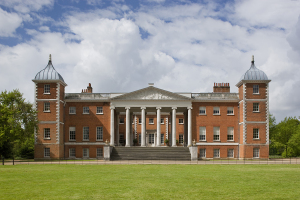Walking the tightrope between preservation and access
By Sam McCann, Communications Associate

Osterley Park is among the properties the National Trust worries will be disrupted by proposed airport expansion.
The tension between preservation and access isn’t a new one.
In a perfect world, we’d be able to preserve our environment and our history in a way that allows everyone to experience them in all their glory, all the time. However, preservation and access don’t always align so neatly. On one hand, providing unfettered access can leave delicate treasures at risk of damage; on the other, working to preserve such treasures often means limiting their exposure to the public or indeed even placing them behind closed doors altogether. Usually, there’s an obvious middle ground– the National Trust can allow everyone to visit Knole and see its impressive collections, but not let them jump on its beds or touch its paintings.
It’s when the middle ground isn’t so apparent that we become unsure of where to step. The National Trust recently took a stance on one such issue, coming out against airport expansion around Heathrow and Gatwick. This exact issue is playing out in Royal Oak’s backyard, as Brooklyn’s Prospect Park is enduring heightened air traffic, upsetting many residents.
In announcing their decision to oppose airport expansion, the Trust acknowledged that this was not a straightforward issue, and in doing so illuminated just how far the implications of preservation policy can reach.
The ruling amounts to this: the damage to the integrity of properties around the airports, caused by noise from heavier plane traffic and by encroaching infrastructure, like trains and roads, leading to the airport, outweighs the benefits of more frequent flights to England. Therefore, they oppose airport expansion. However, the Trust commendably points out that more flights mean cheaper tickets and more visitors to its properties.
Which brings us back to preservation versus access. At what point does it make sense to allow some degradation of a property – via noise, in this instance— in order to make it accessible to people from all around the world? What level of degradation are we as a community comfortable with, and what level of increased access to we expect to get in return?
But the Trust must also live up to the other half of its motto, and preserve these sites forever. Do you consider a gorgeous, natural landscape, such as Osterley Park, preserved if a 747 rushes overhead every hour? Or if a train roars past, or car horns prove a constant nuisance? And what about the environmental issues surrounding air travel? How does the long-term damage caused by more travel affect the Trust’s ability to preserve its holdings forever? The Trust does great work in preventing the encroachment of infrastructure in vital natural areas – Thomas Hardy’s Slepe Heath being a great recent example – and it seems its taking a similar stand against expanded infrastructure here.
When our goals of preservation and access don’t line up as harmoniously as we’d hope, it’s important to carefully consider our values. The National Trust and all of us with a stake in its mission must foster an open discussion and arrive at a conclusion that satisfies those values.
Ultimately, I think the Trust’s decision in this instance is spot on – more planes won’t make airfare monumentally cheaper, and the cost in noise and to the environment is simply too high. However, it’s worth probing the tension between the two ideals so beautifully married in the motto: “Forever, for everyone.” It’s only through this kind of healthy inquiry that we can grow as a preservation community and truly live up to our words.




